Introduction
The bombardier beetle stands out as an insect with a remarkable defense strategy. It belongs to the Carabidae family, with over 500 species across tribes like Brachinini and Paussini. This beetle can eject a hot, toxic chemical spray, paired with a popping sound, to fend off threats. For instance, the bombardier beetle aims its spray with precision, making it a natural wonder. In addition, this ability has intrigued scientists and nature enthusiasts alike. This article delves into its history, traits, and ecological impact.
Bombardier beetles are small, typically exceeding a centimeter in length. They rely on a chemical reaction of hydroquinone and hydrogen peroxide for defense. The mixture heats up to near-boiling in their abdomen during ejection. On the other hand, this mechanism can deter predators like birds or frogs effectively. Their survival tactics offer valuable lessons in biology. Let us explore how they were discovered.
Moreover, the beetle’s chemical prowess hints at broader ecological roles. Researchers study its spray for insights into natural pest control. The insect thrives in varied habitats, from forests to deserts. However, its impact on ecosystems requires balanced analysis. This article examines its journey and challenges ahead.
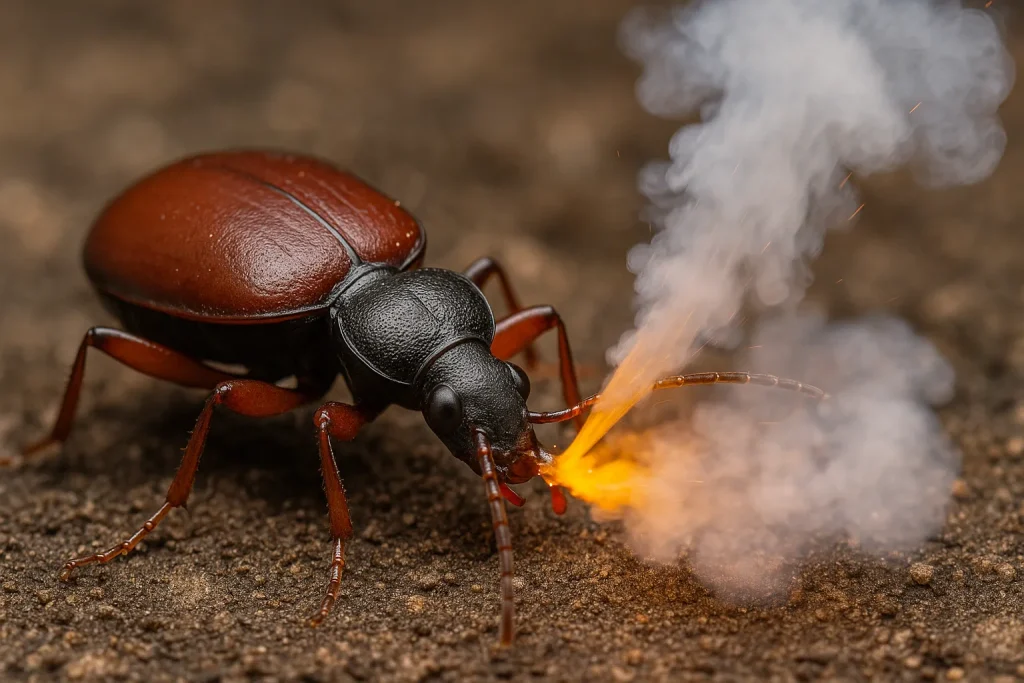
Historical Discovery
The bombardier beetle gained notice in the 19th century for its explosive defense. Naturalists observed its spray and popping sound, comparing it to a tiny cannon. In 1823, William Elford Leach, a British entomologist, named the genus Brachinus, a prominent group. Early records show its ability to repel predators fascinated scholars. In addition, this marked the start of its scientific study.
Further research in the 20th century unraveled its chemical secrets. In 1969, Thomas Eisner, a chemist, detailed the reaction of hydroquinone and hydrogen peroxide in its glands. His findings showed catalysts triggering an explosive release at 100°C. On the other hand, the bombardier beetle became a case study in biochemical evolution. This work linked biology with chemical science.
Furthermore, its discovery sparked debates on evolutionary design. Some suggested its complexity implied intentional creation, while others, like Eisner, proposed gradual adaptation. Fossil evidence from 50 million years ago shows early Carabidae with chemical traits. Meanwhile, these discussions highlight the beetle’s scientific significance. Its history reflects a blend of curiosity and analysis.
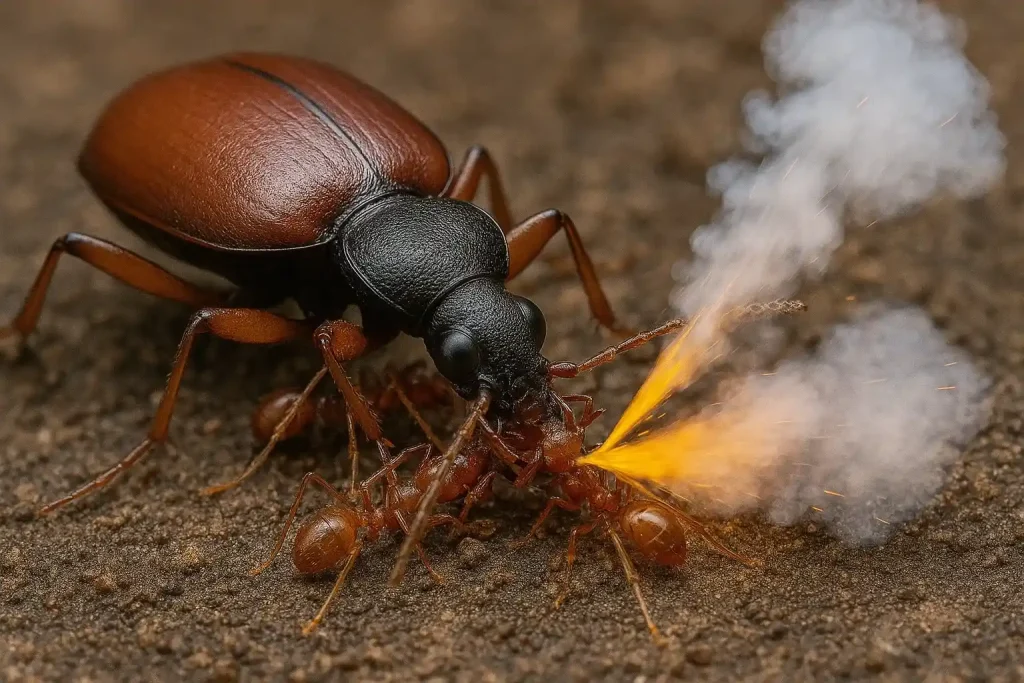
Physical Characteristics
The bombardier beetle features a distinctive look suited for survival. It measures 1 to 2 centimeters, with a shiny, metallic body. Colors vary from dark green to black, often with orange or red markings on the head and thorax. Its elytra, or wing covers, shield the soft abdomen underneath. For example, Brachinus fumans in America has a dark, metallic sheen.
However, its wings under the elytra are vestigial, meaning it cannot fly. This limitation makes its chemical defense crucial for escape. The beetle’s legs are long and slender, aiding quick ground movement. In addition, its segmented antennae detect threats with precision. These traits enhance its ability to thrive.
Moreover, the abdomen holds specialized glands for its defense. These glands feature chambers to store and mix chemicals safely. Some African species can rotate their spray up to 270 degrees for targeting. On the other hand, this design protects the beetle from self-harm. Its form reflects a balance of function and adaptation.
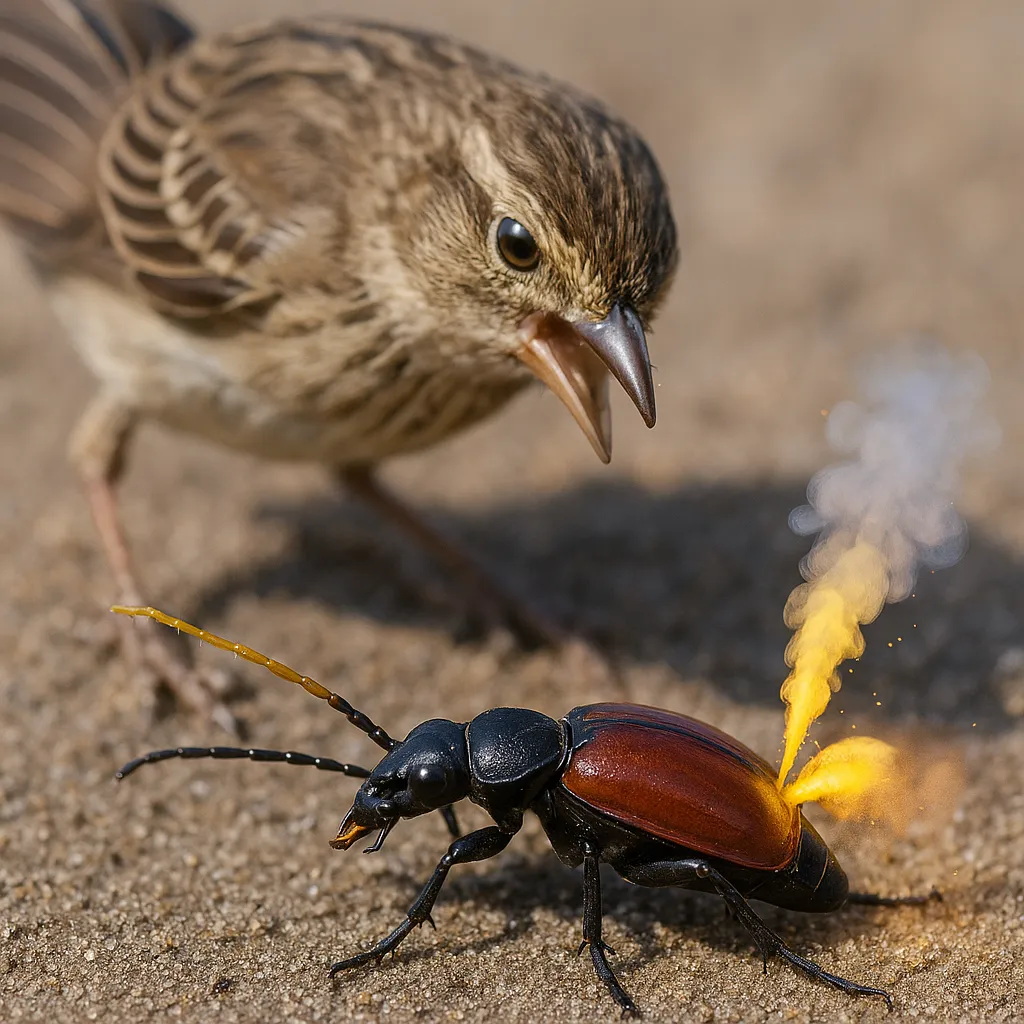
Defense Mechanism
The bombardier beetle’s defense relies on a sophisticated chemical process. It stores hydroquinone and hydrogen peroxide in separate abdominal glands. When threatened, catalysts like catalase mix these, producing a hot benzoquinone spray. This reaches 100°C and can burn predators’ skin. For instance, the spray deters attacks from birds or humans.
In addition, the ejection is carefully controlled to avoid self-injury. A valve and flexible membrane regulate the chemical flow into a reaction chamber. After each burst, the valve closes, cooling the chamber. Meanwhile, the beetle can fire 10 to 15 bursts safely. This precision ensures its survival during threats.
Furthermore, the spray comes with a loud pop, startling predators. The reaction’s pressure shoots the liquid up to 30 centimeters, often hitting the attacker’s face. A 2018 Science Magazine study noted a beetle escaping a frog’s stomach using this spray. However, this defense can irritate human skin if mishandled. Thus, its mechanism is both effective and risky.
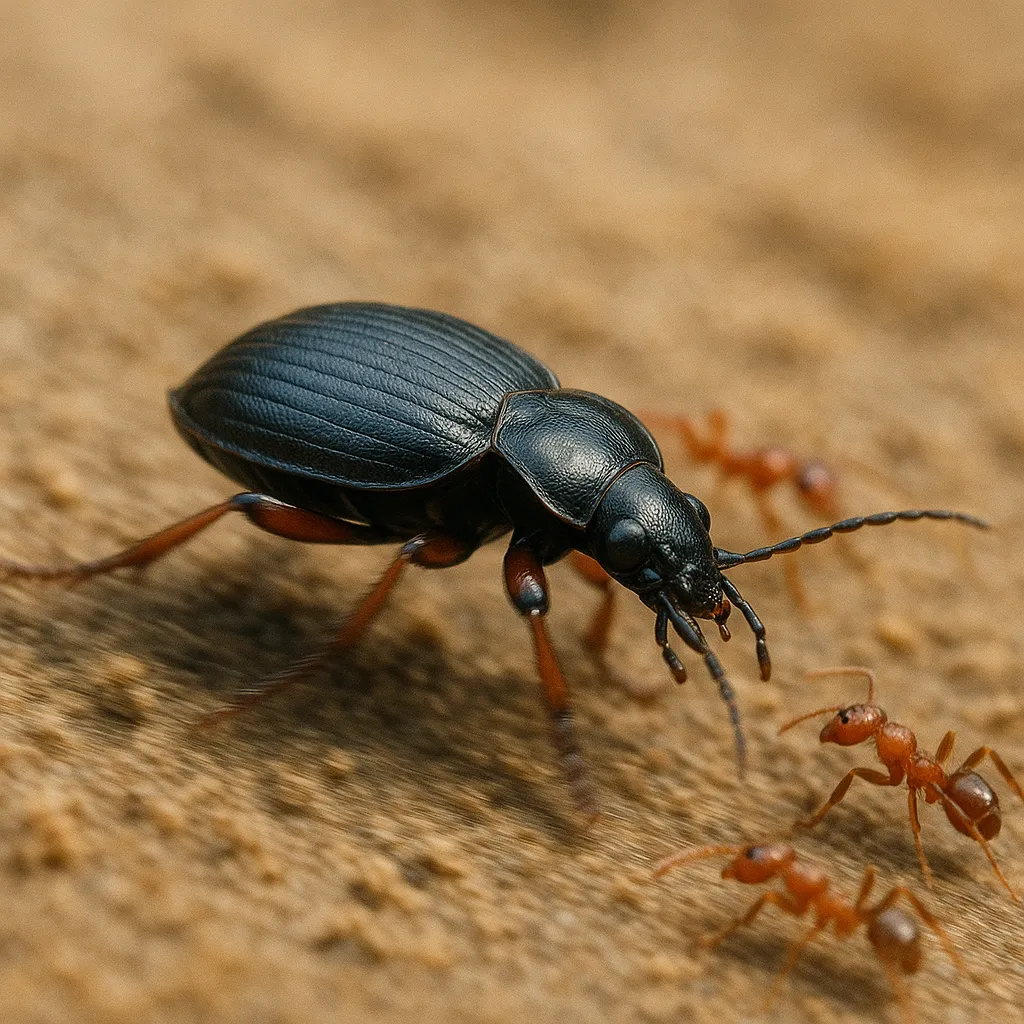
Habitat and Behavior
Bombardier beetles inhabit diverse environments, from forests to deserts. They prefer temperate zones, often near rivers or wetlands after storms. For example, Ozaenini tribe species thrive on South America’s damp forest floors. These ground-dwellers hide under rocks or logs by day. In addition, their habitat choice limits predator encounters.
Moreover, they are predatory, feeding on ants and caterpillars. Their strong mandibles catch prey, mostly at night to avoid detection. Some also scavenge decaying matter, showing dietary flexibility. On the other hand, their flightless nature increases reliance on chemical defense. This behavior supports their survival strategy.
Additionally, they live solitary lives, interacting only during mating. Females lay eggs in soil or under debris, where larvae develop into predators. The larvae lack spray but use camouflage for safety. However, habitat loss from deforestation threatens some populations. Thus, the beetle adapts to ecological pressures.
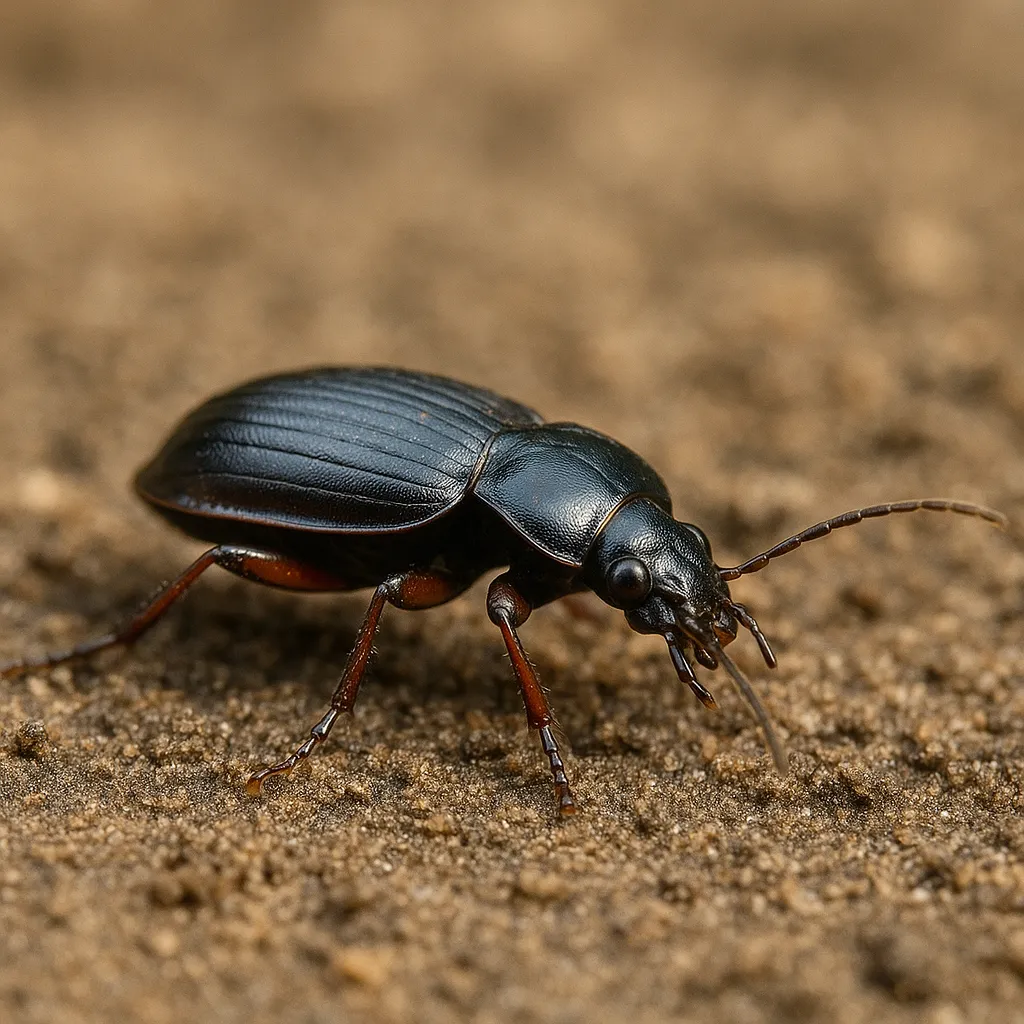
Leave a Reply